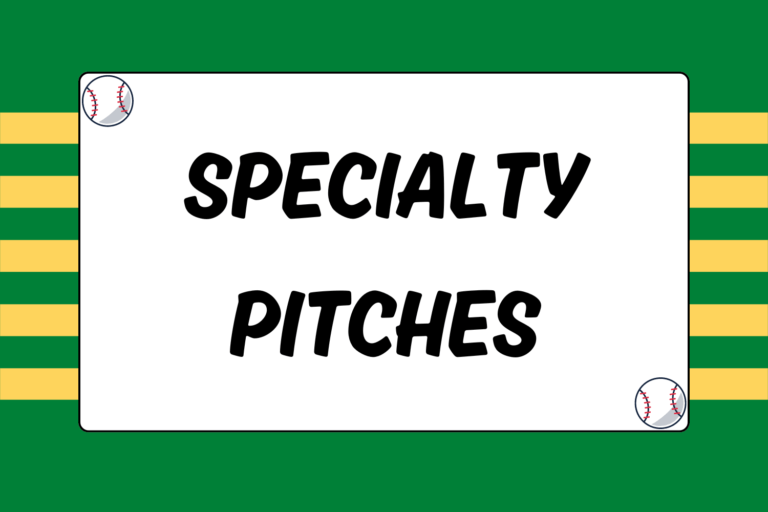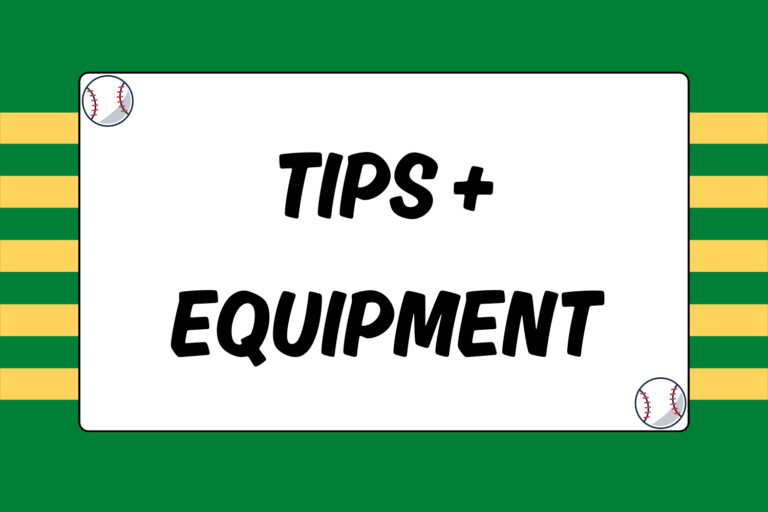The stolen base is one of the most exciting plays in baseball. More importantly, it’s a valuable weapon in the offensive game. If you’re leading off an inning, a walk and a stolen base are as effective as a double off the left field wall. Stolen bases ignite rallies, so the ability to steal makes you even more valuable to your team.
People often assume that if a player is a fast runner, he will be a good base stealer. This is sometimes true — speed and athleticism can take you a long way. But as you advance to higher levels of baseball, you’ll find that successful base stealers rely heavily on preparation and the ability to analyze both the situation and opponent. Keep reading for tips on how to be a master thief on the base paths!
Taking Your Lead
Getting a good lead is crucial to stealing bases, especially when one step can be the difference between safe and out. So whether your coach gives you the sign or you plan to steal on your own volition, here are three tips to keep in mind:
- Be aggressive: Take your lead as far off the base as possible, while still making sure you can dive back safely if the pitcher throws over.
- Don’t telegraph the steal: Before the pitch, avoid doing anything to give away the fact that you’re about to steal. It’s tempting to try to create an advantage for yourself, but don’t angle your body towards second base or flinch with your right leg. Basically, try to make your lead look exactly like it would if you weren’t stealing.
- Watch the pitcher’s feet: If the pitcher lifts his back foot first (that is, the foot closest to the pitcher’s rubber), it means he’s either going to step off or make a pickoff throw. If he lifts his front leg, it means he’s throwing home. That should be your trigger to steal; when the front foot raises, you can take off for second base!
Hot Tip: Do or Die
If the pitcher is left-handed, he can lift his front foot and still throw over to first base. Because of this, stolen base attempts are less frequent against lefties. But if you do get the steal sign, the same rule applies. Your only chance to steal second is by running on “first move” — in other words, as soon as he lifts his front foot. It’s an all-or-nothing play, but you simply have to hope he pitches the ball!
Stealing Second Base
Quick reactions are vital for base stealing. As soon as the pitcher starts his delivery, you need to get your momentum moving towards second base as quickly as possible. Pivot your feet, turn your hips and torso, and take a cross-over step with your left leg.
Every player has a slightly different running form, but in general you should focus on the following techniques:
- Take long strides.
- Keep your head still and your eyes forward.
- Keep your arms in close to your sides (avoid flailing).
In the majority of situations, the batter will not swing when you attempt a steal. However, if he misses the sign, or if there are two strikes and he has to protect, the batter may occasionally swing at the pitch. It can be disorienting to hear the “ping” (or “crack”) of the bat when you’re halfway to second base, but don’t panic.
If you’re not sure where the ball is, find your third base coach as quickly as possible — he will direct you where to go. If the ball falls in for a base hit, you’ll likely be able to round second and keep going to third base. A ground ball to an infielder means you should continue your motion and slide into second. A pop-up or fly ball to one of the fielders means you need to get back to first, but you should have time to retreat while the ball is in the air. The most dangerous hit is a line drive to an infielder. If that happens, odds are your entire team will be yelling at you to get back to avoid a double play. Change directions and dive back to first as quickly as you can.
Study Your Opponent
If you watch enough baseball, you’ll often hear television announcers talk about a base stealer’s “jump” (for example, “Ellsbury got a great jump there”). The jump refers to how quickly — once the pitcher begins his delivery — a base runner is able to take off for second base and get up to top speed.
The ability to get good jumps depends relatively little on your speed. Instead, it has everything to do with your preparation. You can’t get a very good jump by reacting to the pitcher; you have to study your opponent enough that you can predict the right moment to start running. This is an advanced skill that takes a lot of practice to master, but here are some variables to keep in mind that are absolutely vital to getting good jumps:
Catcher’s arm:
Pay attention to the catcher’s arm strength, accuracy, and how quickly he gets rid of the ball. You can never assume the catcher will make a bad throw, but if he looks impressive during warm-ups, you may think twice about swiping a bag.
Pitcher’s delivery:
In most cases, you steal a base off the pitcher, not the catcher. Because of this, you can gain a major advantage by learning his tendencies. The most important question to answer is: How quickly does he get the ball to home plate? Often, this factor alone will determine whether you can steal. If the pitcher has a slow delivery, your chances should be pretty good.
Pitcher’s cadence from the set position:
This is a more advanced skill, but learning it will allow you to get fantastic jumps on steal attempts. The fact is, many pitchers are predictable and they don’t even realize it. When you’re on first base, get in the habit of counting the pitcher’s cadence on every pitch. From the moment he comes set, start reciting the alphabet in your head (A, B, C, D, E, etc.) and pay attention to what letter you’re on when the pitcher begins his delivery motion. A savvy pitcher will vary how long he stays in the set position, but many do not. You might find that the pitcher delivers the ball on “C” every single time. This can come in pretty handy when trying to steal, since you can actually time your jump. Start the alphabet in your head when he comes set, and take off for second base when you get to “C.” Keep in mind that you should only do this once you’re sure you have the pitcher’s timing.
Cover All Your Bases
Finally, remember to always slide when you try to steal a base. Even if the ball gets away and there is no play at second, get in the habit of sliding. Only if you hear a coach yell “Up!” should you go into the base standing.
In many ways, baseball is a thinking person’s game, and base stealing is a thinking person’s skill. Unlike hitting, pitching, or turning a double play, it’s not really something you can master through repetition and practice. As a base stealer, your practice is in your preparation. So study your opponents, take solid leads, and learn how get good jumps — after that, it’s just a matter of running from one base to the next!





